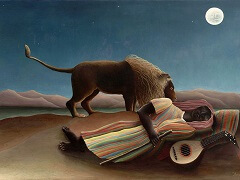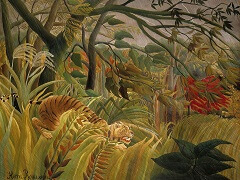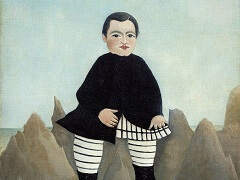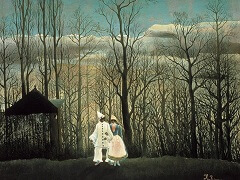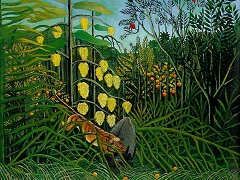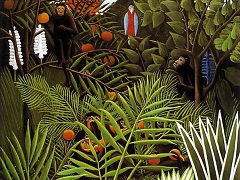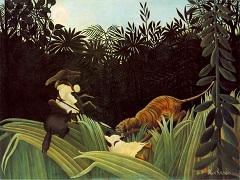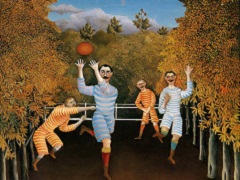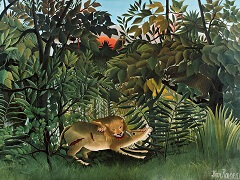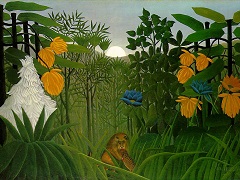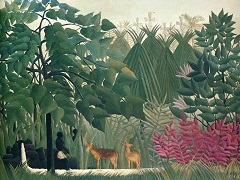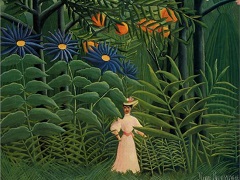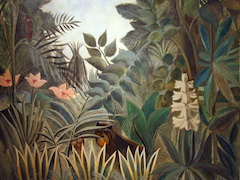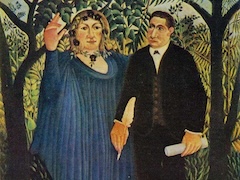War, 1894 by Henri Rousseau

War, personified as a wild woman in white, riding a black horse, gallops through a desolate landscape strewn with butchered bodies. Colour and life are drained out of everything, leaving only death and destruction. A clear blue sky heightens the impact of her passing: behind her a tree is burnt black, while the grey tree in front awaits fire and obliteration. She carries a flaming torch and a bare sword - but this is no classical Bellona, Roman goddess of war. Rather, she is an elemental force, humanity's worst side made as irresistible as a force of nature.
Rousseau permits no hope in this vision - his most violent subject. Dead and dying humans are cut off like tree limbs, their pale flesh coloured orange like the smoky clouds behind. Jagged black elements recur, from the elongated horse's mane to War's own hair, almost an animal's pelt. The pattern is repeated in some victims' hair, and in the crows pecking at their bodies. Rousseau was very much affected by the Franco-Prussian War of 1870-71 and the Siege of Paris in 1871; the effects were still visible in the streets in the 1890s, with many amputees to be seen.
The catalogue of the Salon des Indépendants, where the painting was first exhibited in 1894, listed it as: 'War; she passes terrifyingly, leaving despair, tears, ruin all around.' Rousseau depicts the horse as one of the four ridden by the Four Horsemen of the Apocalypse (from the Book of Revelation), while appropriating the form of Théodore Géricault's flat-out racer in Epsom Derby 1821.3 By this time, Eadweard Muybridge's photographs had proven that all four hooves never left the ground together in this way, but the frightening image of War floating over her victims was more visually compelling than mere empirical reality.
Rousseau's sources for his compositions included popular engravings and illustrations, as well as works by the Old Masters like Leonardo da Vinci, Michelangelo, Titian, and Caravaggio. An anonymous lithograph portraying the Tsar as a caped Cossack with sword was published in the socialist journal L'Egalité on 6 October 1889, and republished as an advertisement in Le Courrier francais on 27 October 1889.4 Another inspiration was Night (Die Nacht) 1889-90, by the Swiss painter Ferdinand Hodler, shown in Paris at the Salon des Artistes Français in 1891. Hodler portrayed strongly foreshortened prone figures surrounding a hooded black figure of Death.

